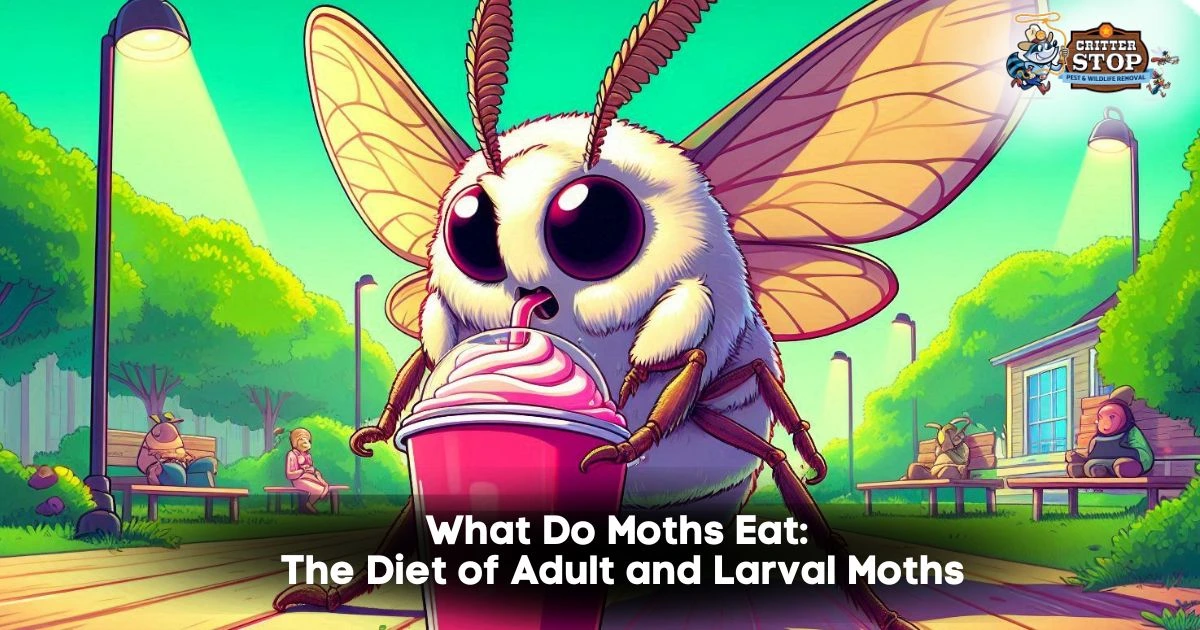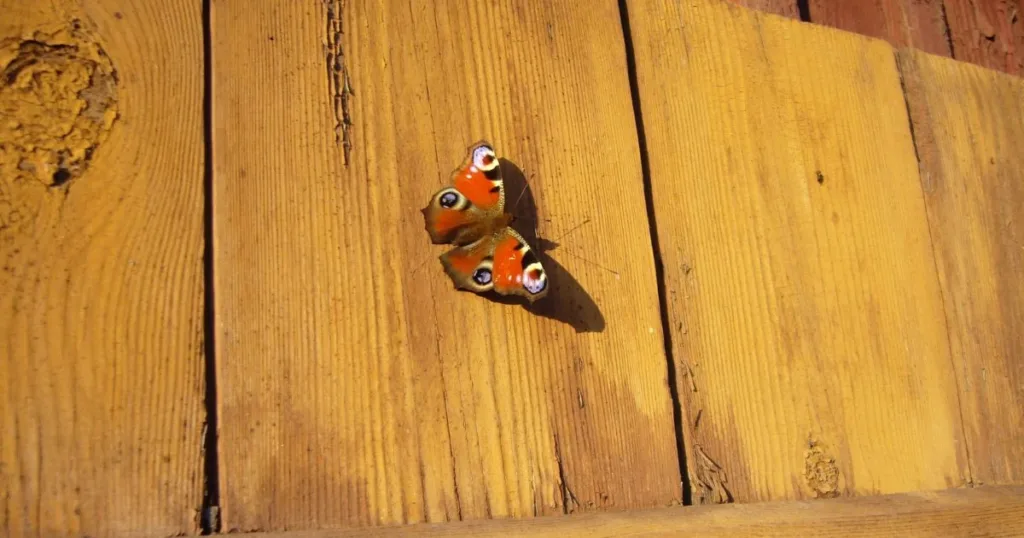
What do moths eat? Most adult moths eat nectar from flowers, but some species do not feed at all during their short lives. If you’ve ever noticed moths gathering around your porch lights, you might wonder what attracts them besides the glow. The answer often lies in their search for food sources.
Moth caterpillars, on the other hand, have different diets and noticeably feed on leaves, textiles, grains, or stored food depending on the species. Understanding what moths eat can help you identify and manage them in your home or garden. By knowing their preferred foods at each life stage, you can better appreciate these often-overlooked insects and the roles they play in the environment.

What moths eat depends on their stage of life and the species. Moth larvae and adults consume different foods, and each species may have unique dietary needs.
Adult moths commonly feed on liquids rather than solid foods. Nectar is the primary source of nutrition for many species, providing them with sugars essential for energy. You may also find that some adults will feed on overripe fruit juices, tree sap, or honeydew secreted by aphids.
Certain moths, such as the Vampire Moth, can pierce fruit or animal skin to drink fluids. However, some adult moths, like the Luna moth or Atlas moth, lack mouthparts altogether and do not eat at all during adulthood. Their energy comes from fat reserves built up during the larval stage.
For easy reference, here’s a summary of adult moth foods:
| Food Source | Notes |
| Nectar | Primary food for most adults |
| Fruit juice | Overripe, fermenting fruit |
| Tree sap | Some woodland moths |
| Honeydew | Secreted by aphids and consumed by some |
| None | In moths with no working mouthparts |
Larval moths—known as caterpillars—are voracious eaters and require solid food to grow and develop.
They typically eat leaves from a variety of host plants. For example, the cabbage moth larva eats cabbage and related crops, while the gypsy moth larvae feed on oak and other hardwoods.
Some larvae have specialized diets. The clothes moth caterpillar digests animal fibers such as wool and feathers, causing damage to stored textiles. Others, such as the wax moth larva, feed on beeswax in honeycombs.
Key points about larval moth diets include:
Not all moths consume the same foods, and their ecological roles and adaptations influence their diets.
Plant-eating moths often have species-specific host plants, while grain moths infest and consume stored cereals. Clothes moths target animal fibers, while pantry moths prefer dried foods such as grains and nuts.
Some species are generalists, eating a wide range of plants, while others have very restricted diets. The presence or absence of functional mouthparts in the adult stage further differentiates moth species by what they can and cannot eat.
You can identify what moths eat in your area by observing which plants are damaged or by finding larvae in food storage or closets. This helps you understand their specific feeding patterns and adapt your control measures accordingly.

Moths often display feeding habits that go beyond the typical diet of nectar or plant material. Some species adapt their food choices due to environmental pressures or habitat-specific resources.
While many moths feed on nectar, several species consume minerals, salts, or even animal fluids to meet their nutritional needs. For instance, you might find the Calyptra genus, sometimes called "vampire moths," piercing the skin of mammals to obtain blood.
Moths may feed on tree sap, rotting fruit, dung, or tears from animals—a behavior known as lachryphagy. The environment and the scarcity of traditional food sources can encourage these unusual behaviors. Below is a list of substances moths have been observed feeding on:
These choices help supplement a moth’s diet when nectar or vegetation is unavailable or insufficient.
The habitat where a moth lives can drastically influence what moths eat. In forested areas, moths may rely more on sap flows, while those in tropical regions might have greater access to overripe fruit and animal excretions.
Urban environments expose moths to alternative sources, such as spilled beverages or even human sweat. Agricultural settings sometimes result in moths feeding on sugary crops or damaged produce.
Table: Examples of Habitat-Driven Food Sources
| Habitat | Common Food Sources |
| Forest | Tree sap, decomposing wood |
| Tropical | Rotting fruit, animal droppings |
| Urban | Spilled drinks, sweat |
| Farmland | Damaged crops, flowering weeds |
You will observe that habitat restrictions and resource availability often shape the range of food items in a moth’s diet. This variation contributes to the adaptability of what moths eat in changing or challenging conditions.

Moths in your home might be eating more than you think. While adult moths usually feed on nectar, some species—especially their larvae—target everyday household items.
Common moth larvae foods include:
These pests find their way into closets, pantries, and even under your furniture. You may notice tiny holes in clothing or the presence of cocoons. Pantry moths are especially drawn to flour, rice, and dried pet food.
Table: Items at Risk from Household Moths
| Moth Type | Typical Foods Eaten |
| Clothes Moths | Wool, feathers, hair, silk |
| Pantry Moths | Grains, cereals, nuts, and dry fruit |
| Carpet Moths | Carpets, upholstery, and animal hair |
Finding what moths eat in your home can help you target problem areas. Keep grains and fibers in airtight containers to prevent infestations.
If you suspect you have a moth problem or need help with the safe and professional removal of wildlife or pests, consider calling Critter Stop at (214) 234-2616 for a free inspection. Critter Stop is renowned for its exceptional work, meticulous attention to detail, and friendly customer service, as evidenced by its excellent online reviews.
Moths exhibit diverse dietary habits, varying according to their life stage and species. Their eating behavior can affect materials in your home, and their diet can include both solids and liquids.
Adult moths typically feed on nectar from flowers. Some species also consume fruit juices, tree sap, or even rotting organic material. Moth larvae (caterpillars) may eat leaves, grains, or animal fibers depending on the species.
Yes, clothes moth larvae can cause damage to textiles in your home. They often target fabrics containing animal-based fibers such as wool, silk, and cashmere. Synthetic fibers and plant-based textiles, such as cotton, are usually less affected.
In the wild, moths feed on a variety of substances. Adult moths generally consume nectar from flowering plants or sap from trees. Moth caterpillars eat leaves, grains, seeds, and other plant material.
Moths are most active at night and may search for food sources such as nectar during these hours. They are attracted to flowers that bloom or release scents at night, making nectar more accessible to them in the dark.
Nectar is the primary liquid that adult moths consume. Some species may also drink water, sap, or juice from fruits. Occasional feeding on other solutions, such as honeydew from aphids, can occur in specific environments.
Clothes moth larvae generally cannot survive on 100% cotton since it lacks the animal protein keratin found in wool and similar fibers. They require proteins, which are not present in pure plant-based textiles such as cotton or linen.
Visit our Critter Library and learn more about our furry friends